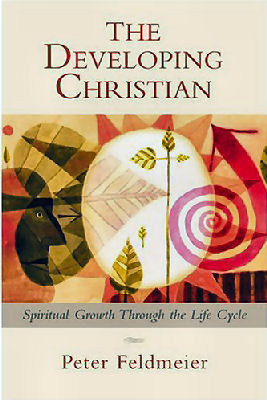
|
Posted April 2, 2007
Book: The Developing Christian: Spiritual Growth Through the Life Cycle Author: Peter Feldmeier Paulist Press. New York. 2007. Pp. 294 An Excerpt from the Jacket: Who are we? What does it mean to be authentic? True? Good? What does it mean to be holy? And how are human growth and spiritual maturity related?
Throughout the book Feldmeier maintains the creative tension between emotional, maturity and sanctity. He demonstrates how and why they must be related and mutually informing. At the same time, he shows how collapsing psychology and spirituality, or ego-development and holiness, are fraught with peril. Regarding saints, he observes, “There was an untamable otherness about them.” An Excerpt from the Book: Abbot Dom Christian de Cherge wrote in his journal: If it should happen one day. . .that I become a victim of the terrorism which now seems ready to encompass all the foreigners living in Algeria, I would like my community, my Church, and my family members to remember that my life was given to God and these people. This single sentence says so much. One see for Dom Christian, who himself spent many hours a day alone in prayer, that his life was no isolated relationship between himself and God. He knew himself to be part of the larger community that included his family, his church, and the Algerian people. We also see here that his life did not belong to him. He had given it over — not just abstractly to God, but also quite concretely to the people. He owned nothing, not his community, his church, or his family. They remained important for him, but he had emptied himself of all desire to possess. For Dom Christian and his brothers everything was self-donation. The brothers shared everything they had with their neighbors, even their place of worship. This poor Muslim community could not afford to build a mosque, so the brothers shared the abbey chapel for their Friday services. They were not propagating Islam. Rather, their Christian witness was to share all they had with the people. They spoke of this witness in their last community letter. Fearful of a possible terrorist attack, they wrote: The violent death of one of us or all of us together would simply be the logical consequence of all of the forms of renunciation we have already made. In Dom Christian’s diary he wrote of his possible death and the beatific vision in heaven which he anticipated in faith: This is what I shall be able to do, if God so wills; to immerse my gaze into that of the Father, to contemplate with him his children of Islam as he sees them; all shining with the glory of Christ, fruit of His Passion, filled with the gift of the Spirit whose secret joy will always be to establish communion and to refashion the divine likeness, playing with our differences. Days later, terrorists dragged the brothers out of the monastery and shot them for such a witness. Table of Contents: 1: Principles of Spirituality 2. Models of human development 3. Models of spiritual development 4. Childhood (2 - 12 Years) 5. Adolescence (12 - 18 years) 6. Early youth adulthood (18 - 22 years) 7. Youth adulthood in the world (22 - 40 years) 8. Middle age (40 - 65) 9. Elderhood (65 and beyond) 10. Final questions and new directions |
|
